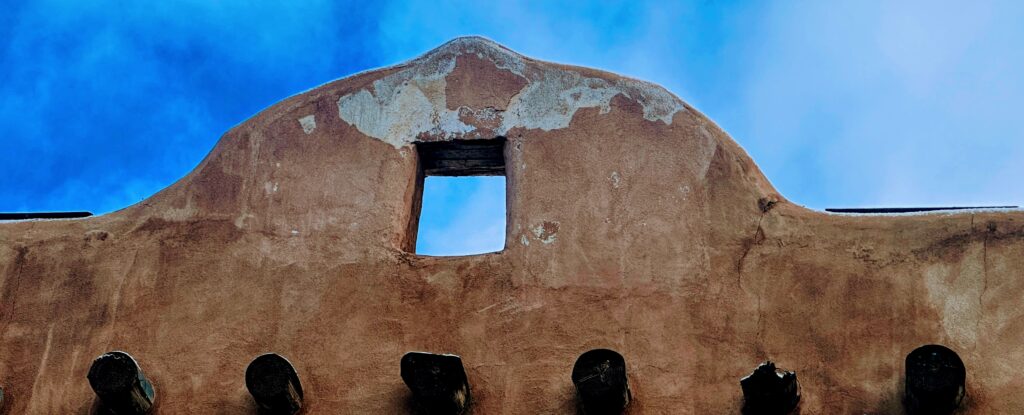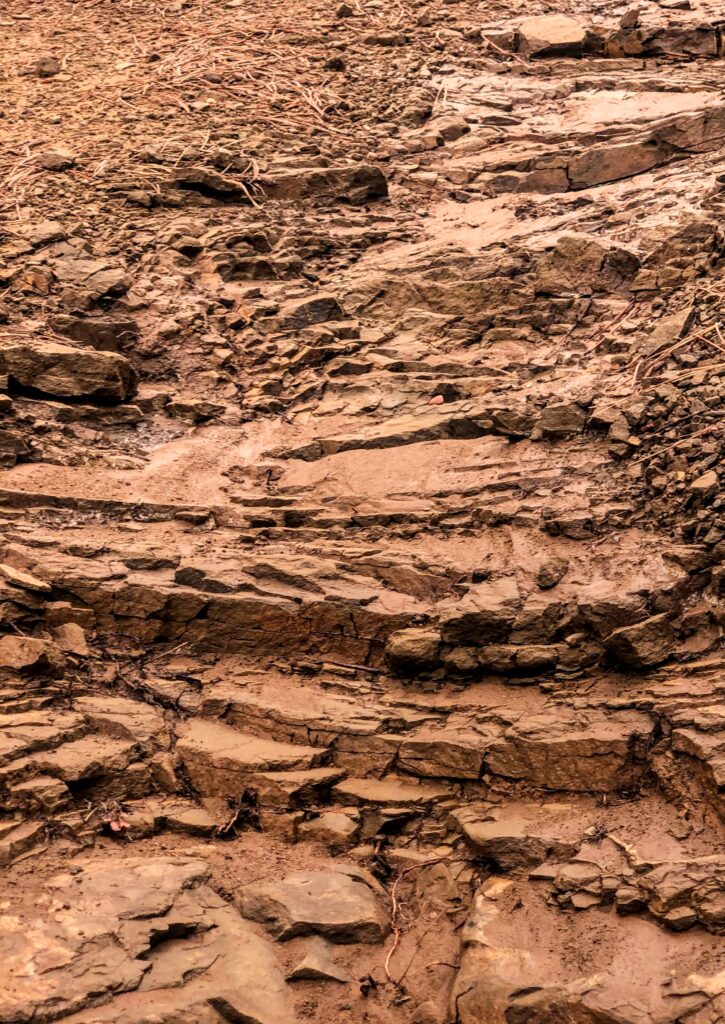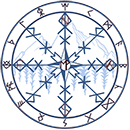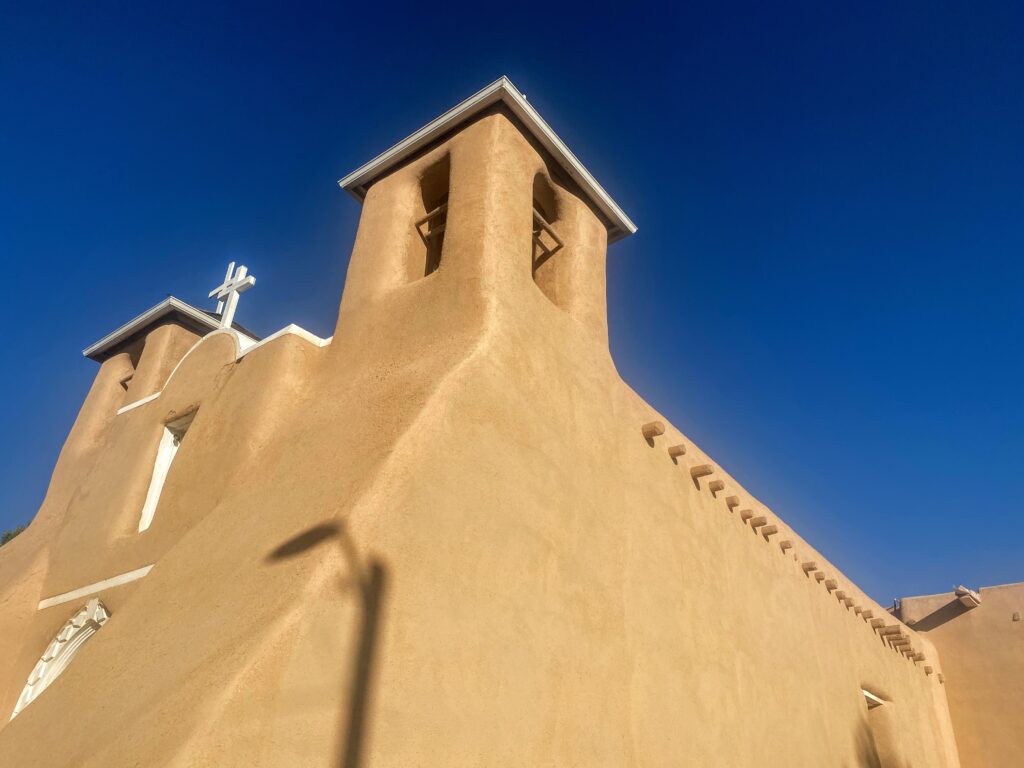
The womb of birth, which is of water
– Lise Goett
And The womb of death, which is of earth.
But for the living, mud.
And if mud is what we’re made of, those of us in northern New Mexico are very down-to-earth. Mud: a cultural and architectural recipe. There’s mud to get mired in, there’s mud for healing, hornos, floors, ceilings, and walls. There’s mud all around us, particularly during spring (or as we like to call it, mud season). We miss it if there’s a drought and the snowmelt is lean and wan. We miss it like we miss a seasonal tonic.
In this region, start perhaps by a visit to Taos Pueblo (a World Heritage Site.) Their mud dwellings are likely the oldest, continuously inhabited buildings in the country. They are multistoried and impossibly elegant. They are the bones of this place. A few centuries later, the Spanish arrived, and other mud styles, like adobe brick building, came to the Southwest from the Old World. One fine example is the Martinez Hacienda along the Rio Pueblo in Taos, with its ghosts of the past still lingering. The more recently arrived brought their own version of earthen architecture, as you can discover by touring the Greater World Earthship Community 12 miles from Taos on highway 64. Structures are burned into the earth, dirt rammed into old tires, and there are examples of cob-style mud building, many with recycled bottles built right into the walls.
What mud does so well in high, semi-arid climes of sunny days and cold nights is to store up heat during the day and exhale it at night. Like northern New Mexican cuisine, mud recipes vary, using what is at hand: dirt (clay), sand, straw; and of course, water. Some families have redone their houses so many times that only a handful of the original bricks remain, but those may be nearly 400 years old and act like embers to ignite the memory of ancient ancestors.
Also visit the oft-photographed San Francisco de Assis church in Ranchos de Taos. Because the surfaces of mudded buildings must be maintained, part of the church’s yearly ritual is just that. In summer, parishioners are out in the cool of the morning with their wheelbarrows full of fresh mud. They re-layer the walls of the church until, over the years, the church has grown stouter, thanks to the careful attention of many hands. Search out the many adobe churches tucked into tiny neighborhood plazas, and look at the lovely way old adobe houses melt back into the earth, recycling themselves.

People tend to think of mud as dirty, but it is an essential healing and cleansing element. Any visit to Ojo Caliente, a regional hot springs and spa, would not be complete without indulging in the mud baths. The mud is a little more expensive, but it’s worth it. and you can get a massage with that.
Another quintessentially New Mexico experience is getting bogged down on some gummy back road in the soquete (sort of like a delicatessen mud, or a driver’s nightmare). As anyone knows who has ever got stuck in it, it’s quite the life experience. You try to walk away but you can’t because each step grows heavier and next your shoes are pulled right off your feet. Here you are, a poor, bereft, and essential soul, with only the shirt on your back (and maybe some pants). It’s like a slow-mo dream and you can’t escape. Cosmic mud can suck you in; you might never get out of this place.

